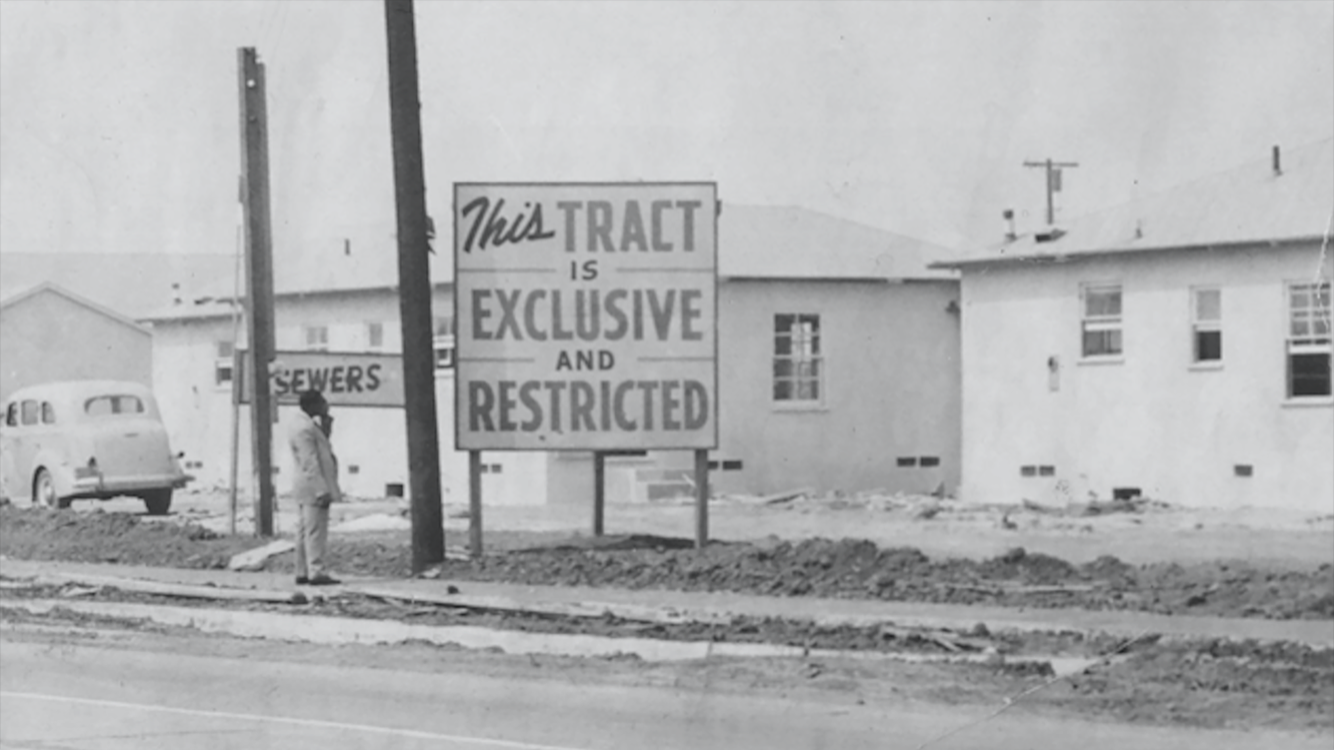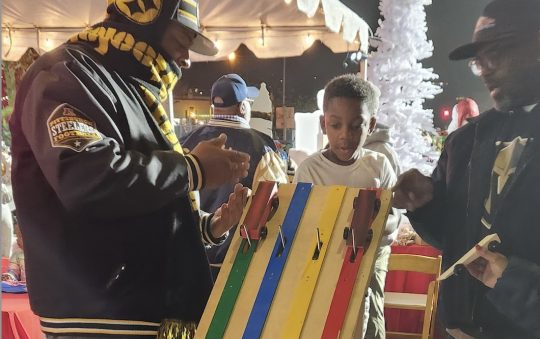Some of the country’s most intense “battles” around gentrification – commonly defined as the renovation or reinvigoration of communities or areas thru the influx of new residents and businesses which leads to the displacement of long-term residents from those same communities or areas – are currently being waged in predominantly Black South L.A. neighborhoods such as Leimert Park, View Park and Windsor Hills.
Yet and still, the battles of today are not quite as intense as the battles of yesteryear: the battles to gain entry.
“Los Angeles: Displacement in Utopia” is a 20-minute short film that will debut next week at the 28th annual Pan African Film Festival. The film will be shown on Monday, February 17 at 6 p.m. at the Cinemark 15 Baldwin Hills-Crenshaw, and on Wednesday, February 19 at 1:35 p.m. inside of the Baldwin Hills Crenshaw Plaza.
“Displacement in Utopia” “examines the history of how racial restrictive covenants developed, who fought against them, and how they were legally struck down in Los Angeles, California, and the nation.”
Restrictive covenants were contractual agreements that prohibited the purchasing, leasing or occupying of property by African Americans in certain areas of Los Angeles; basically, any area outside of the Central Avenue corridor where Black people had been segregated since the Great Migration of the 1920s.
“Once again, African Americans in Los Angeles find themselves involved in a struggle for access. In the past, it was the struggle for decent housing and better opportunities through access to non-restricted areas,” said Dr. Karin L. Stanford, former chair of African Studies at California State University, Northridge (CSUN) and a co-creator of the film.
“Today, its for access to better opportunities and investment that now is being poured into their neighborhoods after years of neglect,” Stanford said.
Long-term residents are displaced through gentrification when landlords increase the rent on their dwellings in hopes of getting more affluent tenants. An added layer in this saga would be those residents who lost their homes through the mortgage crisis of the middle 2000s, as well as residents who seek to move or beneficiaries who seek to sell family homes they inherited. African Americans then become priced out of neighborhoods they have lived in all their lives as both rental payments and home mortgages skyrocket.
A press release for the film on the Bradley Center website states: “Using interviews, video footage, and photographs, the documentary examines African American migration and settlement as well as the triumphs and hardships experienced as they sought to overcome systemic/institutional racist exclusionary in the new “Utopia.”
Throughout the film, the audience will witness African Americans’ creative use of legal strategies to fight restrictive covenants, enlistment of proxy buyers, and establishment of real estate institutions to support their efforts to purchase real property and land.
The short film features many of those whose efforts were instrumental in dismantling Los Angeles’ restrictive covenants such as attorney Loren Miller, who would later go on to publish the California Eagle newspaper; Miller led the legal charge for fair and equal housing opportunity via the Supreme Court; Oscar-winning actress Hattie McDaniel, a resident of the “Sugar Hill” neighborhood in what is now West Adams; and singer Nat “King” Cole whose family faced intense racism after moving into the Hancock Neighborhood.
The mini documentary is a project of the Tom and Ethel Bradley Center housed at California State University, Northridge. It was written, produced and directed by the team of Stanford, Keith Rice, historian and Bradley Center archivist, and Pilar de Haro, a former student of journalism at CSUN.
According to its website, the mission of the Tom and Ethel Bradley Center is to collect, preserve and disseminate the visual history of the region with an emphasis on ethnic minority communities and photographers.
Named for Los Angeles’ first African American mayor and his wife, the Bradley Center archives contain over one million images from Los Angeles based freelance and independent photographers from the 1930s to the present. Eighty percent (80%) of the collection is comprised of the works of African American photographers in and near Los Angeles.








